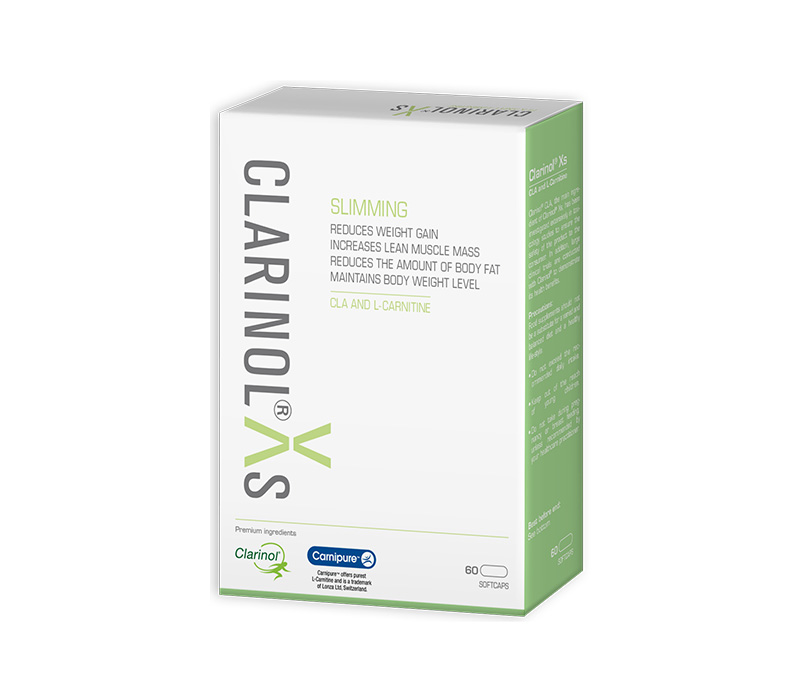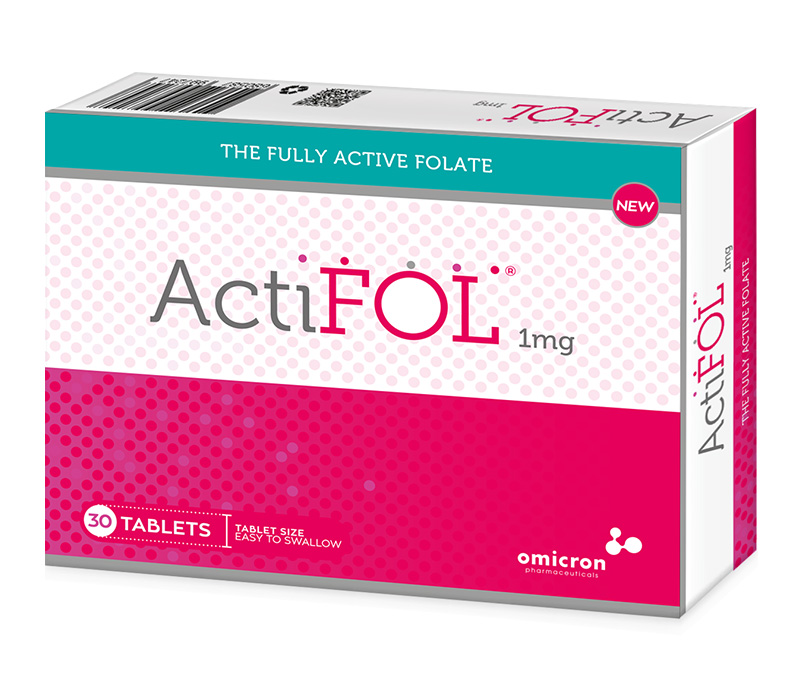Hyperoil®
Overview
Hyperoil® history dates back to 2005, when it acquired the product’s patent license; and in 2006 clinical trials in humans began for the treatment of ulcers and bedsores.
The initial findings of the Clinica Barbantini of Lucca, Tuscany, one of the most important National reference centers, carried out by the Department of Vulnology, surpassed even the most optimistic forecasts.
In 2008, Hyperoil® obtained the CE certification as Class IIb Medical Device.
On 13/02/13, the prestigious BMJ (British Medical Journal) published the first scientific paper regarding the use of Hyperoil® for the treatment of diabetic foot, entitled “The use of an extract of Hypericum perforatum and Azadirachta indica in advanced diabetic foot: an unexpected outcome“.
Dr. M. Letizia Iabichella, expert in Angiology and Vulnology and author of the case report documents the clinical unexpected outcome of Hyperoil® based treatment on complicated vascular ulcers with complex clinical management (bone exposure, extension tendency, and susceptibility to recurrent infections).
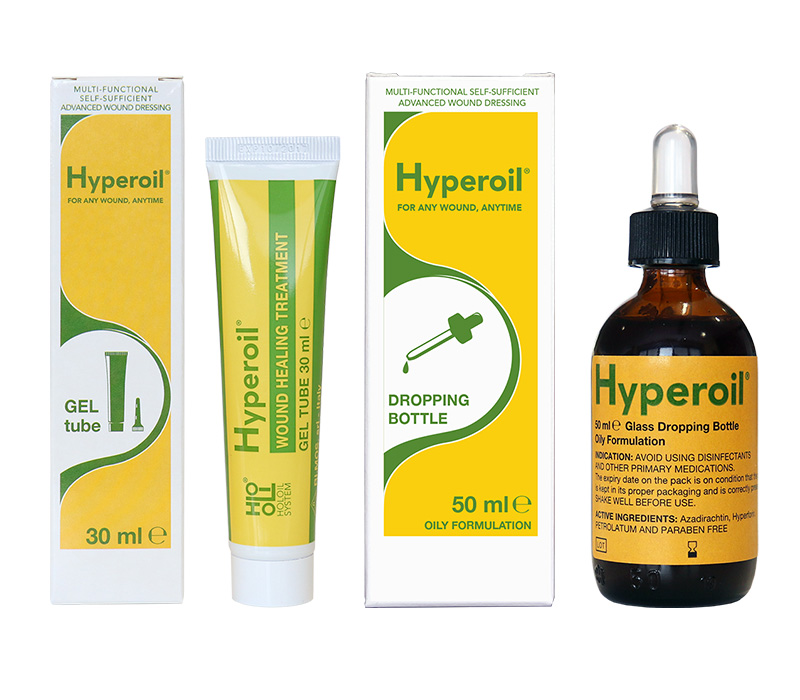
The paper demonstrates the clinical efficacy of Hyperoil® while endorsing its application within home-based self-medication executed by family members. It is the first medical evidence that shows a remarkable and significant result with a multifunctional self-sufficient advanced wound dressing of vegetal origin, in diabetic foot vascular ulcers.

For Any Wound, Anytime!
Multi-Functional, Self-Sufficient Advanced Wound Dressing
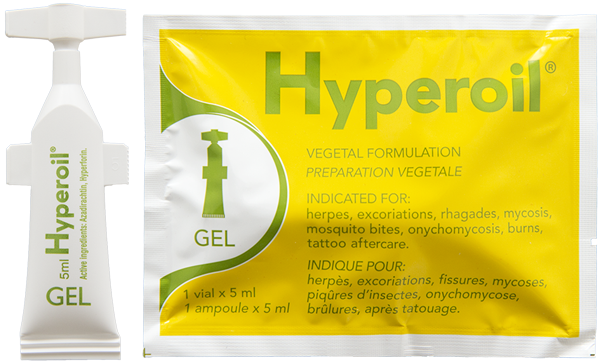
Read More
Research
Buruli Ulcer
Iabichella ML et al.(2014), Localized Treatment of Chronic Buruli Ulcer with HyperoilTM: An Unexpected
Outcome, Austin J Clin Case Rep, 1(7): 3
Iabichella ML et al. (2015), Ulcère de Buruli: des Horizons Thérapeutiques en Hôpital et en Brousse,
Angéiologie, 67(1): 29-41
Diabetic Foot
Iabichella ML (2013), The Use of an Extract of Hypericum perforatum and Azadirachta indica in Advanced Diabetic Foot: an Unexpected Outcome, BMJ Case Reports, doi: 10.1136/bcr-2012-007299
Iabichella ML, Caruso C, Lugli M (2014), The Use of an Extract of Hypericum perforatum and Azadirachta indica in a Neuropathic Patient with Advanced Diabetic Foot, BMJ Case Reports, doi: 10.1136/bcr-2014-205706
Iabichella ML (2015), The Use of a Mixture of Hypericum perforatum and Azadirachta indica for the Management of Diabetic Foot Ulcers: a Case Series, J Diabetes Metab, 6:2, doi: 10.4172/2155-6156.1000499
Radiation Dermatitis
Iabichella ML (2013), The Use of an Extract of Hypericum perforatum and Azadirachta indica in Advanced Diabetic Foot: an Unexpected Outcome, BMJ Case Reports, doi: 10.1136/bcr-2012-007299
Severe Acute Malnutrition
Iabichella ML et al. (2017), A Case of Skin Ulcer in Severe Acute Malnutrition Treated with Hyperoil®, Austin J Clin Case Rep, 4(1): 1111
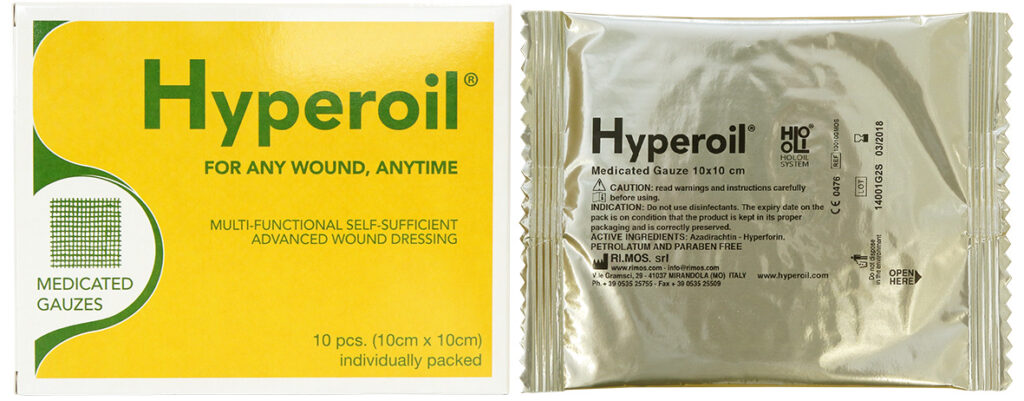
Advanced Medication
- Keep a moist micro-environement and a constant temperature
Tissue wound dressings can be divided into: Traditional and Advanced.
Traditional dressings have been abandoned in favour of Advanced ones when in 1962, the dressing takes on new benchmarks, based on the publication of Winter’s studies. The concept of drying the wound is replaced by the healing in a moist environment. The fundamental action of Advanced dressings is the physiological interaction with tissue lesion. This interaction should keep a biocompatible moist microenvironment on the lesion surface that promotes the processes of cell division and replication, ideal to help and accelerate the process of tissue repair.
Traditional dressings
- Anemia
- Fatigue and muscle cramps
- Bleeding gums and bruising
- Depression
- Tingling and numbness in extremities
- Stunted growth and development in children
- Abdominal pain
- Appetite loss and weight loss
- Tender or sore tongue
- Eczema
- Rapid heartbeat
- Hair loss
- Mental confusion or forgetfulness
If compared to Traditional dressings, Advanced dressings provide:
- Best infection prevention
- Best support to re-epithelialization
- Fibrinolytic activity
- Cleansing activity
- Minor trauma during dressing changes
- Better soothing effect
The healing in a moist environment allows new cells of squamous epithelium to gradually slip through the wet surface of the lesion, speeding up tissue repair, instead of opening a difficult access under the dry crust or eschar. A fast and physiologically correct healing for an optimal epithelial cell proliferation requires to met other factors:
- Appropriate temperature (35°C-37°C)
- Moisture
- Oxygenation
In addition, an “ideal” Advanced dressing should also:
- Protect the wound from mechanical damages
- Protect from bacterial contamination (impermeable to external micro-organisms)
- Create an occlusive environment able to facilitate and optimize the process of re-epithelialization
- Allow the absorption of excess exudate
- Ensure sterility and cleanliness
- Not leave waste into the wound
- Reduce pain
- Be easy to use
- Be easy to remove without wound trauma
- Create thermal insulation
- Preserve the skin around the lesion
As all Wound Care experts say, it was not possible, up to now, to find a unique Advanced dressing able to do such tasks.
Hyperoil® is fully compatible with the definition of Advanced Dressing because it meets all the necessary actions to assist in proper repair of tissue injury. (Multifunctional).
So Hyperoil® is a Self-Sufficient Primary Advanced Dressing different from other dressings, because it requires only the support of secondary dressings to protect and/or absorb, as needed, performing independently all other key functions at all stages of tissue repair.
One of the key features of Hyperoil® is to provide and maintain adequate hydration of the lesion by promoting a balance of tissue secretions (exudate).
Other advanced dressings promote tissue hydration but in an indirect way, through the simple tissues evaporation occlusion that can cause an inadequate control of secretion by peri-wound maceration and possible infection of the bottom of the lesion.
Thus they cannot be used by unskilled personnel, while Hyperoil® can be applied easily without fear of such drawbacks.
The ease of use both for specialists and for end users means a new orientation towards self-managed medication.
The various professionals can promote this approach directly to the public, warning the need of medical supervision.
This is why Hyperoil® opens the way for a revolution: the creation of Self-Sufficient Multifunctional Advanced Dressings. A new system able to deal with tissue lesions that brings significant benefits in terms of both results and savings on treatment costs of these diseases.
Advanced dressings
- Keep a moist micro-environement and a constant temperature
- Exudate removal and necrotic material
- Protection from exogenous infections
- Oxygen permeability
- Atraumatic
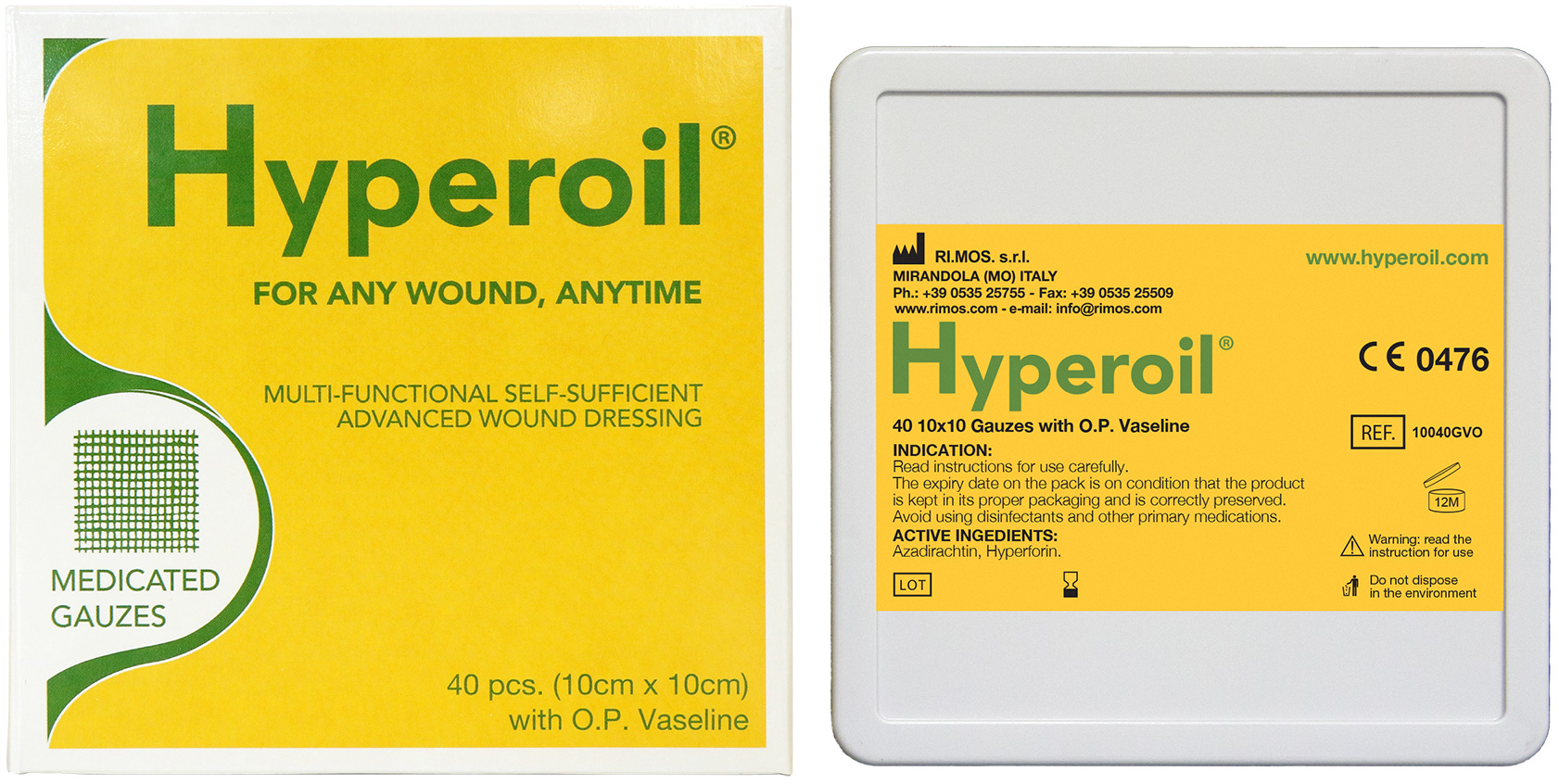
Economic Advantage
The Economic Advantage of using Hyperoil® is based on several factors:
1) It is Multifunctional, thus Self-sufficient in treating chronic wounds. Thanks to Hyperoil® it is possible to perform what usually requires many different primary wound dressings. Saving, in some cases up to 85% of the budget usually needed to treat chronic and severe wounds.
It just needs the support of a secondary dressing to protect and absorb exudate.
It does NOT require disinfectants.
2) It has a Fast Outcome, allowing to shorten the treatment duration.
3) It is very Simple to use, allowing home-based self-medication executed by family members, under regular medical supervision. This helps reducing the costs for hospitalization.
4) It requires Minimum quantity for each application.
Active Ingredients
Definition of Hyperoil® Active Ingredients: component’s synergic action. The components identified as present in major quantity are Hyperforin (from Hypericum Perforatum) and Azadirachtin (from Neem), considered presumably the two most important “Active Ingredients”.
Q&A
Q1: What is the difference between gel and oil formulation?
In the gel the active principles are more diluted, whilst in the oil formulation they are more concentrated.
Q2: Which Hyperoil® formula should be used in the different healing phases?
- INFLAMMATION PHASE: in case of necrotic tissue or fibrin, it is recommended to use the oil formulation with non-woven gauzes. The dressing can be changed daily and previously washed with saline solution at each change.
- GRANULATION PHASE: apply gel spray or cream + gauze with gel + non-woven gauzes.
- REEPITHELIALIZATION PHASE: use gauzes with gel + non-woven gauzes or absorbent dressing.
Q3: Why has the use of steroidal anti-inflammatory to be avoided for topical use (cortisone creams)?
Because this type of anti-inflammatory causes the healing process to stop, torpid sores, bacterial and fungal super-infections.
Q4: Which secondary bandage should be used?
The rule is:
- on lesions with low or a moderate degree of secretion → TNT GAUZES
-
on lesions with a great deal of secretion → absorbent CUSHIONS or COMPRESSES
It is recommended the use of:
- Sterile hydrophilic TNT GAUZES
-
ABSORBENT COMPRESSES
- ABSORBENT CUSHIONS
- COHESIVE ELASTIC CREPE BANDAGES
Additional Information
- Just like other advanced wound dressings, Hyperoil® is not effective on necrotic tissue if tissue hypoxia is less than 30mmHg of O2 (Mercuric Oxide).
- A temporary burning sensation could arise (especially with the oil solution) but it will gradually decrease.
- Bleeding in a lesion is a very positive sign as it means that a chronic lesion is in the process of returning to an acute lesion.
- At temperatures below 17°C, the oil formulation tends to solidify but on application to the skin, spreads easily and immediately. The properties remain unchanged.
- The product is air and light sensitive. Air exposure must be linked to the usage period. The product must be properly sealed after the use. Keep the product in a cool and dry place.
